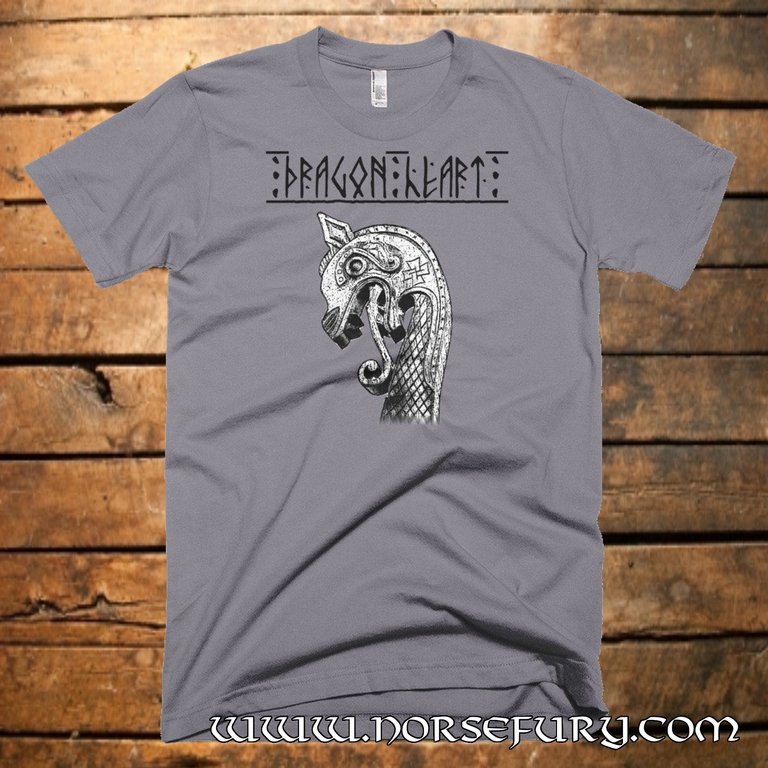In Norse Mythology, the dragon is an important animal and in this blog post we look at three of the best known beasts.

Níðhöggr
Níðhöggr, who's name translates to Malice Striker and is often Anglicised to Nidhogg, is a serpent who gnaws at the roots of the world tree Yggdrasil. The ancient texts of the Prose Edda hint that Níðhöggr is actually trapped by the roots of the tree saving the world from the beast. A squirrel called Ratatoskr runs between the serpent at the base of Yggdrasil and the eagle which perches on top, bringing jealous messages between them. The poem Völuspá also hints that Níðhöggr will herald Ragnarok, the end of the world.

Nidhogg gnaws at Yggdrasil from a 17th Century Icelandic manuscript (source: Wikipedia)
Jörmungandr
Jörmungandr is also known as the Midgard (World) Serpent and was the middle child of Loki and Angrboða's three offspring. Odin sought to rid the Gods of the three children, Fenrir, Hel and Jörmungandr, throwing the serpent into the ocean. There Jörmungandr grew until he was able to bit his own tail and encircle the earth. Thor and Jörmungandr become arch-enemies and the two encounter each other in three myths. In one, Jörmungandr is disguised as a giant cat by the King of the giants and Thor is tasked with lifting the cat off the ground as a test of strength. Although Thor cannot lift the cat fully, he is able to get the cat to lift one of its feet off the ground and he wins the contest. Secondly, Thor goes fishing with Hymir the giant to catch the serpent. Thor baits his prey, but as he is about to kill Jörmungandr with his hammer, Hymir cuts the rope in fear and the dragon escapes. Finally Thor faces Jörmungandr at Ragnarok, after killing the serpent, Thor walks nine paces and collapses dead from the dragon's poison.

Thor and Hymir battle with Jörmungandr from a Medieval manuscript (source: Wikipedia)
Fáfnir
Fáfnir was one of three dwarf sons of the dwarf king Hreidmar, one of whom was killed by the Gods when in the disguise of an otter. When the gods showed the king what they had done, they were seized and forced to pay a ransom by stuffing the otter skin with gold and covering it in red gold. Loki used cursed gold to fulfil the task and Fáfnir killed his father Hreidmar to get the ransom for himself. He became very greedy and ill-natured and went into the wilderness where he transformed into a dragon breathing poison into the land around him to protect his gold. Fáfnir's brother Regin plotted revenge and sent his foster-son Sigurd to kill the dragon and retrieve the gold. Sigurd planned to dig a pit where the dragon walked a path to water, lay in wait and stab him in his soft belly. Odin appears to Sigurd and advises him to dig more pits to allow the blood to run away so Sigurd doesn't drown. The plan goes well and Sigurd stabs Fáfnir in the left shoulder mortally wounding him. As Fáfnir dies he tells Sigurd that the gold is cursed and all that touch it shall die. Sigurd replies that all men will die anyway and it is better to be wealthy until death than not. Regin then plots to kill Sigurd and take the gold for himself, but after eating Fáfnir's heart, Sigurd gained the knowledge of speech of the birds, who warn him about Regin's plot. The tale ends with Sigurd killing Regin by cutting off his head.

Sigurd slays the Dragon Fáfnir from the Hylestad stave church, Setesdal, Norway (source: Pinterest)